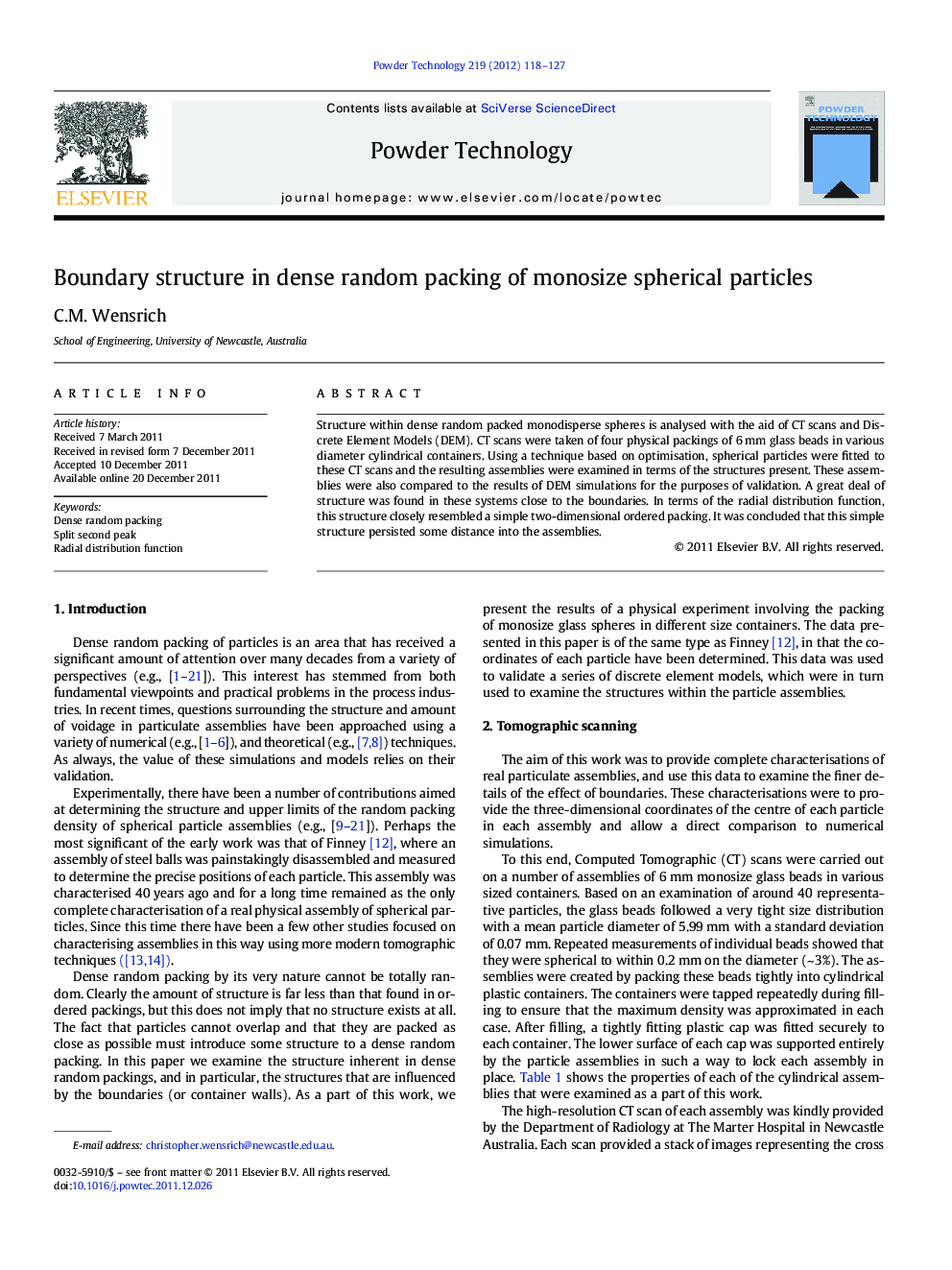| Article ID | Journal | Published Year | Pages | File Type |
|---|---|---|---|---|
| 237394 | Powder Technology | 2012 | 10 Pages |
Structure within dense random packed monodisperse spheres is analysed with the aid of CT scans and Discrete Element Models (DEM). CT scans were taken of four physical packings of 6 mm glass beads in various diameter cylindrical containers. Using a technique based on optimisation, spherical particles were fitted to these CT scans and the resulting assemblies were examined in terms of the structures present. These assemblies were also compared to the results of DEM simulations for the purposes of validation. A great deal of structure was found in these systems close to the boundaries. In terms of the radial distribution function, this structure closely resembled a simple two-dimensional ordered packing. It was concluded that this simple structure persisted some distance into the assemblies.
Graphical abstractDense random packing within cylindrical containers is examined using CT scanning together with a numerical optimisation technique for fitting particles. The results of this experiment are used together with DEM simulations to examine structures formed within otherwise random packings. Much more structure is found to exist near the walls of the containers as compared to typical dense random packing. In terms of the radial distribution function (RDF), the structure near the wall is shown to have many features in common with a simple 2D hexagonal crystal structure.Figure optionsDownload full-size imageDownload as PowerPoint slideHighlights► Positions of 40877 particles are measured using CT data and numerical optimization. ► Boundaries are shown to foster 2D structure in dense random packing (DRP). ► Structures in DRP in the absence of boundaries are compared to 3D ordered packings. ► DRP has similarities to FCC/HCP packings, but the differences are not trivial.
